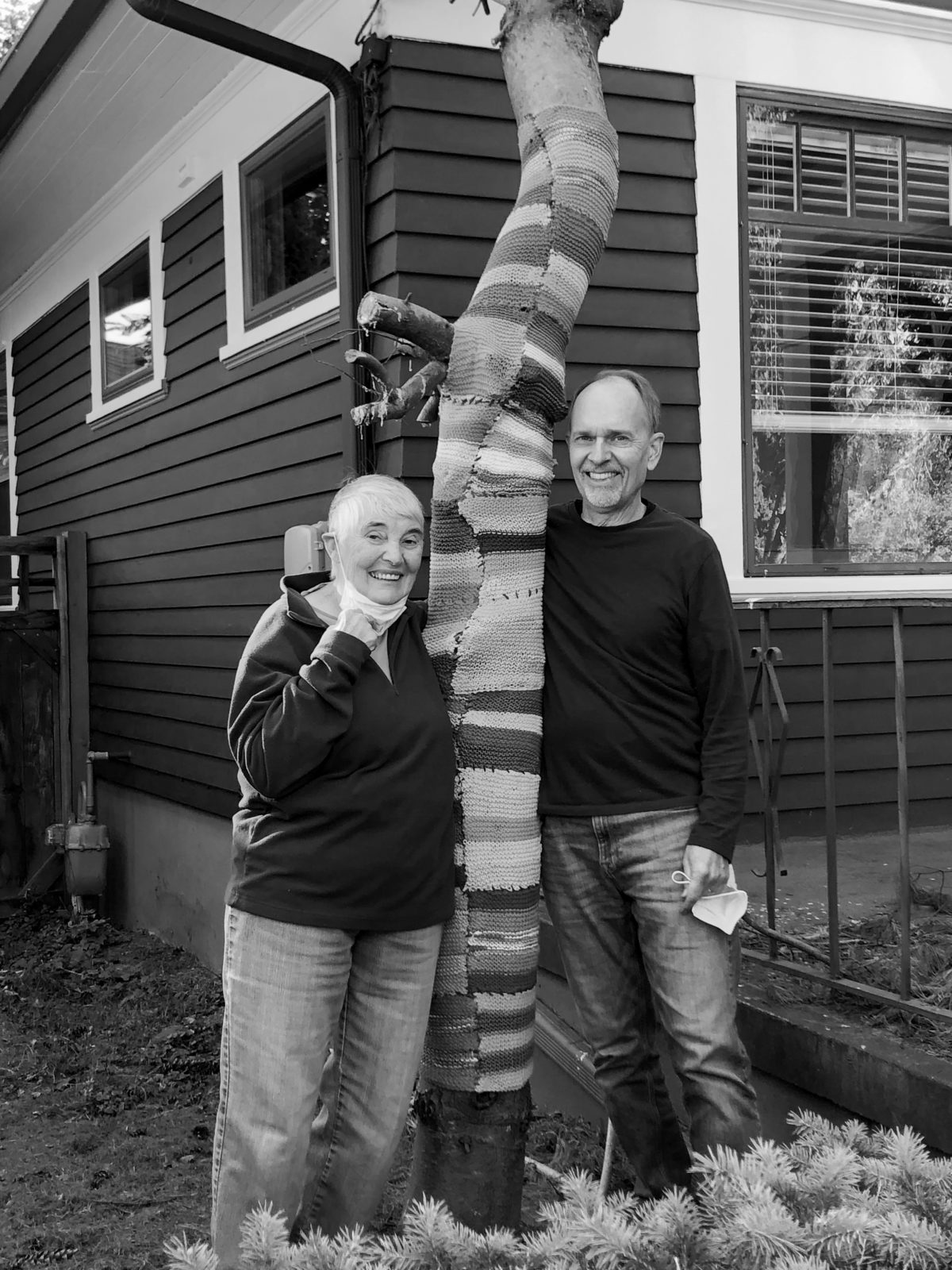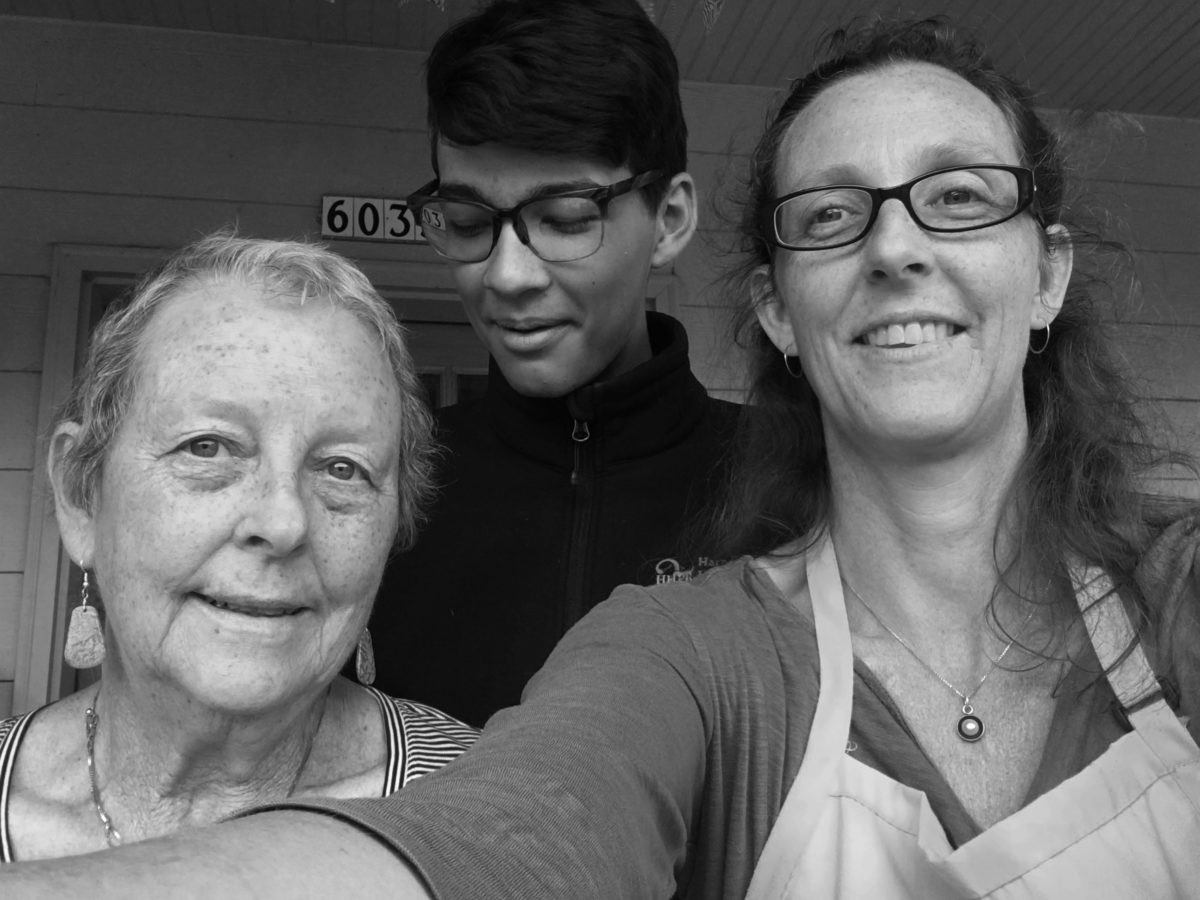Q&A with Amy Jones and Roger Robinson
Something unusual and delightful began popping up around the Sunnyside neighborhood as winter set in last year.
As COVID-19 continued its spread I began seeing a new contagion, one marked by joy and vibrant colors, spreading from tree to tree. On our evening walks, my partner and I began seeing it take hold on new streets. At first, we thought only trees were harbingers of it. And then we saw that the neighborhood Little Free Library was also susceptible.
Yarn bombing isn’t new but it is to our neighborhood. And it’s been a welcome surprise of color and joy during what’s been a monumentally challenging moment for Portland and our nation. This type of street art is referred to by many names: yarn or wool bombing, guerrilla knitting, urban knitting, and kniffiti. Whatever you chose to call it, it employs colourful displays of knitted or crocheted yarn or fibre rather than paint or chalk.
We became enamored with these mystery yarn artists. So I began asking around until one day I found out who they were.
Spoiler alert: The yarn bomber was not Banksy. It was—and is—Amy Jones and Roger Robinson, neighbors of ours from down the street.
When did you begin the yarn bombing project, how did it start, what keeps you going, and what do you love about it most?
Roger Robinson: We began in October 2020. Amy mentioned to me that she didn’t know what to do with the knit squares she makes to keep her hands busy, which reminded me of an example of knit bombing I had seen in Cincinnati, Ohio a few years ago. I asked her to give some squares to me and said I’d show her how we could use them.
So knit bombing came to Sunnyside! She continues to knit them and I sew them together and we bomb them together. I enjoy seeing the excitement on the children’s faces when they see the bombs, and especially when they hug them.
Amy Jones: I keep doing it because I like to knit and to see my work enjoyed by others.
How long have you two lived in Sunnyside?
Amy: 22 years
Roger: 3 years
What’s your background?
Amy: I was a Head Start teacher in Pittsburgh and Portland. I was born in Bronxville, NY. I love to read, and earlier in life I loved bicycling and hiking.
Roger: My longest career has been as an architect. I’ve also been a database designer and business partner. I enjoy playing piano and painting, and I was born in Ft. Wayne, Indiana.
What was the hardest part of the pandemic for you?
Amy: Not being able to work with the kids at Glencoe Elementary School and not being able to travel.
Roger: Separation from friends and family.
What’s one thing you would like to see change about Sunnyside?
Roger: Eliminate the 100+ degree days.
Amy: I’m pretty pleased with Sunnyside.
What’s a fun fact about each of you?
Roger: I hitchhiked across the country when I was a teenager.
Amy: When my daughter Anne, also a Sunnysider, was 8 years old, she was bitten by Norman Rockwell’s dog.


